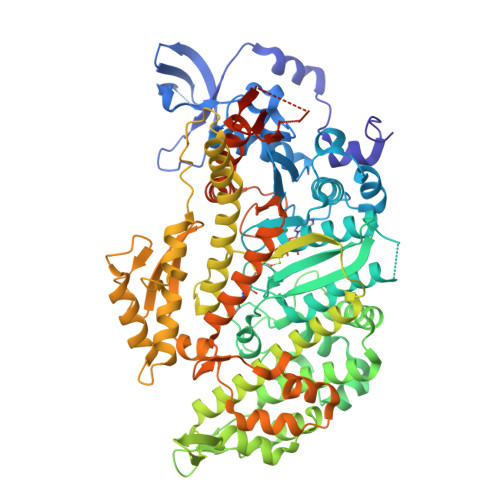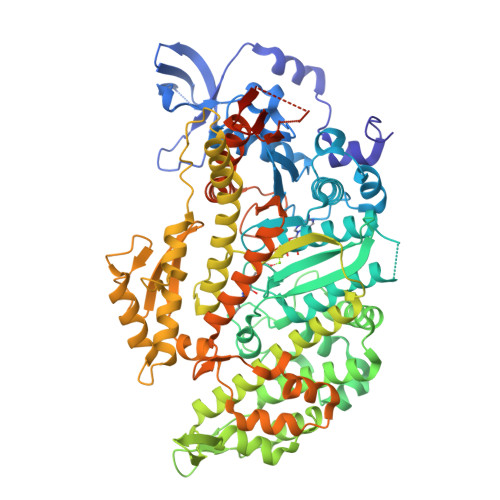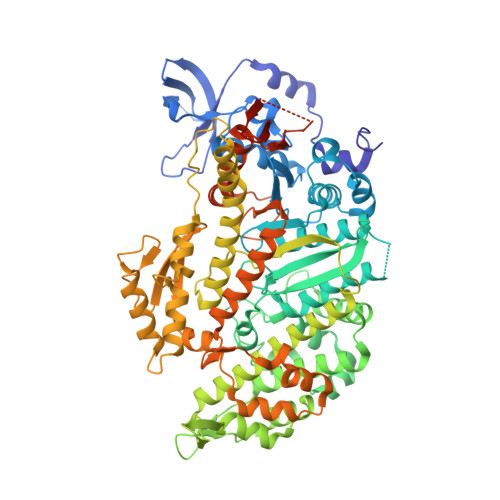The small molecule tool (S)-(-)-blebbistatin: novel insights of relevance to myosin inhibitor design.
Lucas-Lopez, C., Allingham, J.S., Lebl, T., Lawson, C.P., Brenk, R., Sellers, J.R., Rayment, I., Westwood, N.J.(2008) Org Biomol Chem 6: 2076-2084
- PubMed: 18528569
- DOI: https://doi.org/10.1039/b801223g
- Primary Citation of Related Structures:
3BZ7, 3BZ8, 3BZ9 - PubMed Abstract:
The small molecule blebbistatin is now a front line tool in the study of myosin function. Chemical modification of the tricyclic core of blebbistatin could deliver the next generation of myosin inhibitors and to help address this we report here on the impact of structural changes in the methyl-substituted aromatic ring of blebbistatin on its biological activity. Chemical methods for the preparation of isomeric methyl-containing analogues are reported and a series of co-crystal structures are used to rationalise the observed variations in their biological activity. These studies further support the view that the previously identified binding mode of blebbistatin to Dictyostelium discoideum myosin II is of relevance to its mode of action. A discussion of the role that these observations have on planning the synthesis of focused libraries of blebbistatin analogues is also provided including an assessment of possibilities by computational methods. These studies are ultimately directed at the development of novel myosin inhibitors with improved affinity and different selectivity profiles from blebbistatin itself.
Organizational Affiliation:
School of Chemistry and the Centre for Biomolecular Sciences, University of St Andrews, North Haugh, St Andrews, Fife, UK.























